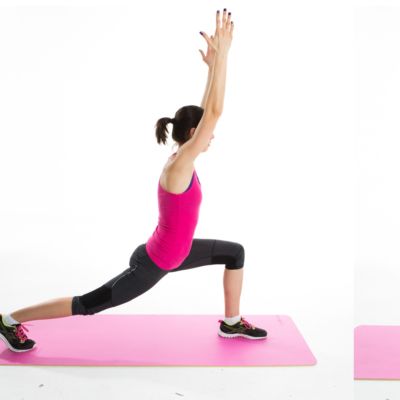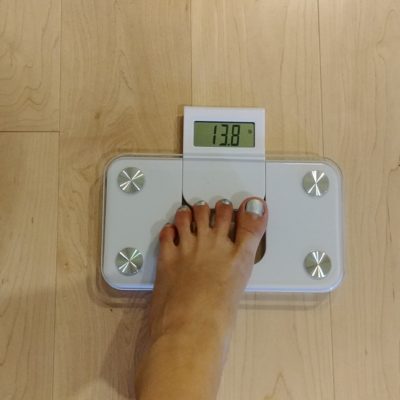When it comes to weight management and weight loss, we all want to look like we did when we were 19yrs old and be able to fit our favorite high school jeans! With diets promising to lose as much as 14lb in 72hrs (yup – I saw that on the front cover of a popular magazine over the weekend) no wonder many people make it their goal to shed pounds like crazy and then get disappointed when it doesn’t happen.
Unless you’re actually in high school, the short answer to “should your high school jeans still fit” is: “probably not.” I mean by this time they’re probably old and torn and severely out of fashion too.
The long answer has to do with what is actually important, more so than fitting those jeans: your level of health. In this article we’ll explore some reasons why your body might have changed along the years, and why that’s ok. I’ll also talk about a few ways in which I work with my clients to help them assess their current health and fitness level, and which you can start paying attention to as well. At the end, I’ve included a checklist you can download so you can figure out your current health status for yourself.
Why your high school jeans no longer fit: Changes to your body
Over the years, you’ve very likely dealt with stuff. Physical, emotional, psychological. Unfortunately, it’s all part of life, and it all takes a toll on your body. Here are some things that might have happened to you:
- One, two, or maybe more kids. And if you’re a guy, you’re not immune: there have been studies to show that guys put on pounds as well when kids start showing up
- Metabolism changes – as we grow older our metabolism slows down, for both men and women
- If you’re a woman, having to deal with menopause
- Having a desk job for many years.
- Using your car to commute to said job
- Sarcopenia, which is the unavoidable loss of muscle mass once you pass 30. You lose 3-5% with each passing decade
- Juggling a busy life with work, kids and a ton of extra-curricular activities, which make it easier to go for that take-out meal than to cook
- Injuries and surgeries
- Car accidents
- Various health conditions
- Loss of loved ones
- Divorce
- Failed relationships
Note how some of the items above are not physical . Yes – emotional and psychological traumas have an impact on our physical bodies as well. What I want you to take from this is that you still need to be kind to yourself and accept that the past has taken its toll.
Ok – now that we’re here in the present: how do you know you need to be working on something to improve your health? If you have a weight management or weight loss goal, what should you base it on?
Below are a few ways I teach my clients to assess their weight and fitness level.
Figuring our your current health status: Your family (aka genetics)
Take a look at your close family members: parents, siblings, grandparents (not so much cousins because they’re one step removed from your bloodline). Are you able to identify any patterns? Genetics is huge in determining our body shape. For example if all your family is bigger people then chances are you will be too. In this case striving to be a size 4 is not realistic. Similarly, if you come from a family of skinny people and you want to bulk up, that might be tough to do.
Sometimes it’s tough to accept that genetics will always be in the way of you getting your ideal body figure – but that doesn’t mean you shouldn’t strive to be the best you can be with what you’re given.
For example, one lady has decided to run marathons even though her body shape is nowhere close to a runner’s.
And this guy does parkour even though he’s built nothing like an acrobat:
Figuring our your current health status: Your girth measurements
Your girth measurements are basically measurements around your body. Typical areas that get measured and can be tracked over time are the following:
- Thighs
- Hips (aka bum)
- Waist (the thinnest part of your torso)
- Upper arms (around the biceps)
One thing to remember is that these measurements can go up or down: they may go up if you build muscle, and they may go down if you are shedding fat.
Finally, girth measurements are not a direct measure of your fitness level: they are merely a way for you to compare your current self to your future self. Also remember that it’s totally normal for your fitness level to go up, and for your girth measurements to stay almost the same. Focus on your fitness level – it’s more important!
Figuring our your current health status: Your BMI
The Body Mass Index (or BMI for short) is a measure of your weight in relation to your height. The BMI helps to classify people as underweight, normal weight, overweight or obese. I myself have an issue with the BMI, because I don’t believe that one’s weight dictates their fitness level. I have clients who are overweight and can do things other skinnier people could only dream of. So again (and this is really important): only use it to compare yourself against yourself. Nothing else really matters.
I use this handy calculator to easily calculate the BMI for my clients, and teach them to calculate it from time to time, and just notice the trend, without freaking out too much.
Figuring our your current health status: Your hip to waist ratio
This ratio is actually very important because it has been shown to directly correlate with an increased risk of developing cardiovascular disease.
Translated in lay terms, this ratio takes your waist measurement and divides it by your hip measurement. Now remember, your waist is supposed to be the thinnest part of your body – while your hips are usually your widest. So this ratio should be smaller than 1. Indeed, the magic number that you want to be under is 0.8. Anything above that means you are at risk for diabetes, coronary heard disease and high blood pressure. Here are the different risk levels.
- <0.8 – Low risk
- 0.8-0.85 – Moderate risk
- >0.85 – High risk
Hopefully I sound like a broken record by now, but I really want you to take the numbers above with a grain of salt. Always compare yourself against yourself and keep track of your own patterns over time.
Figuring out your current health status: Self assessment
Sometimes the best indicator of how you’re doing is YOU. If you are going up the stairs and you feel winded – then you know you’re out of shape.
To a certain extent, everyone has had experiences that told them loud and clear that there is something they need to work on. Perhaps that number on the scale keeps going up, or you feel less flexible, less strong and less agile. Whatever it is, often instinctively we know that we need to work on something. Trust your instincts, dig deeper into it and use some of the measurements above to guide you to discover things you need to work on.
Find out your own health status: my FREE gift to you
Curious to know how you stack up? Here is my gift to you: a simple worksheet that will guide you to find your BMI, waist to hip ratio, and help you determine your current health status.
No Fields Found.



